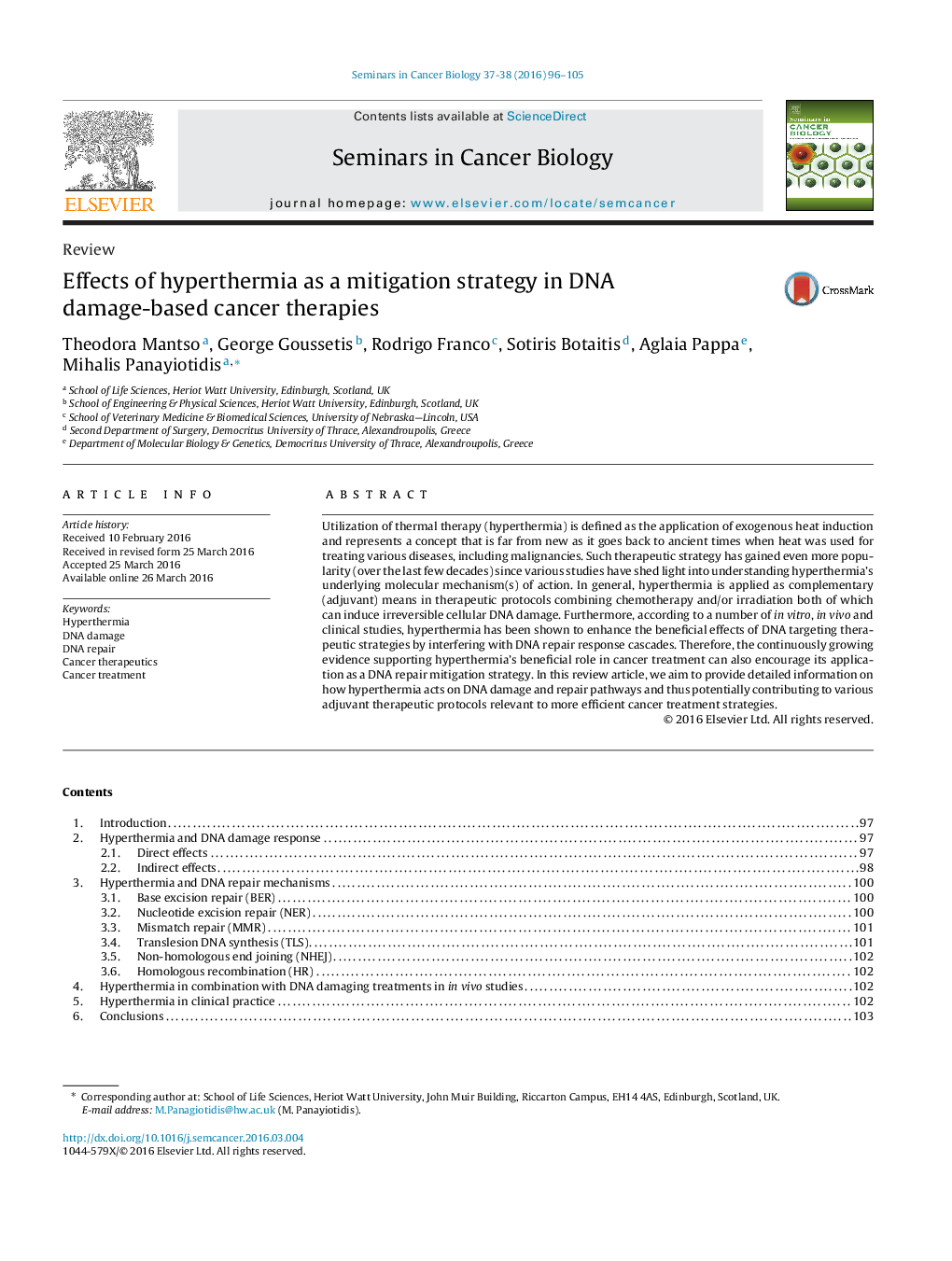| Article ID | Journal | Published Year | Pages | File Type |
|---|---|---|---|---|
| 2024110 | Seminars in Cancer Biology | 2016 | 10 Pages |
Utilization of thermal therapy (hyperthermia) is defined as the application of exogenous heat induction and represents a concept that is far from new as it goes back to ancient times when heat was used for treating various diseases, including malignancies. Such therapeutic strategy has gained even more popularity (over the last few decades) since various studies have shed light into understanding hyperthermia's underlying molecular mechanism(s) of action. In general, hyperthermia is applied as complementary (adjuvant) means in therapeutic protocols combining chemotherapy and/or irradiation both of which can induce irreversible cellular DNA damage. Furthermore, according to a number of in vitro, in vivo and clinical studies, hyperthermia has been shown to enhance the beneficial effects of DNA targeting therapeutic strategies by interfering with DNA repair response cascades. Therefore, the continuously growing evidence supporting hyperthermia's beneficial role in cancer treatment can also encourage its application as a DNA repair mitigation strategy. In this review article, we aim to provide detailed information on how hyperthermia acts on DNA damage and repair pathways and thus potentially contributing to various adjuvant therapeutic protocols relevant to more efficient cancer treatment strategies.
